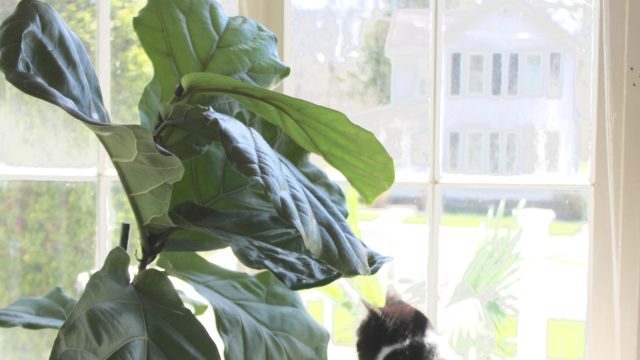
Is #Monsteramonday not enough for you? Want another giant plant friend in your life? Prepare yourselves for the Fiddle Leaf Fig, now becoming popular with #FLFFriday on Instagram.
It’s exhausting staying with the trends.
Fiddle Leaf Figs really aren’t a trend, they’ve actually been favorited indoor houseplants for years. Many of the garden discussion boards I follow have people of all ages asking questions and flaunting their giant Fiddles. I’m not going to dress it up – what makes them the center of discussion is they are TRICKY. Somewhat temperamental and oddly fast growing, Fiddle Leaf Figs, known as Ficus Lyrata, need the right conditions to be happy. Unlike Rubber Trees or Monsteras that are a bit more hardy, Fiddles need the right care to flourish. Don’t be intimidated, keep reading.
Let me introduce, Filbert, my Fiddle Leaf Fig.
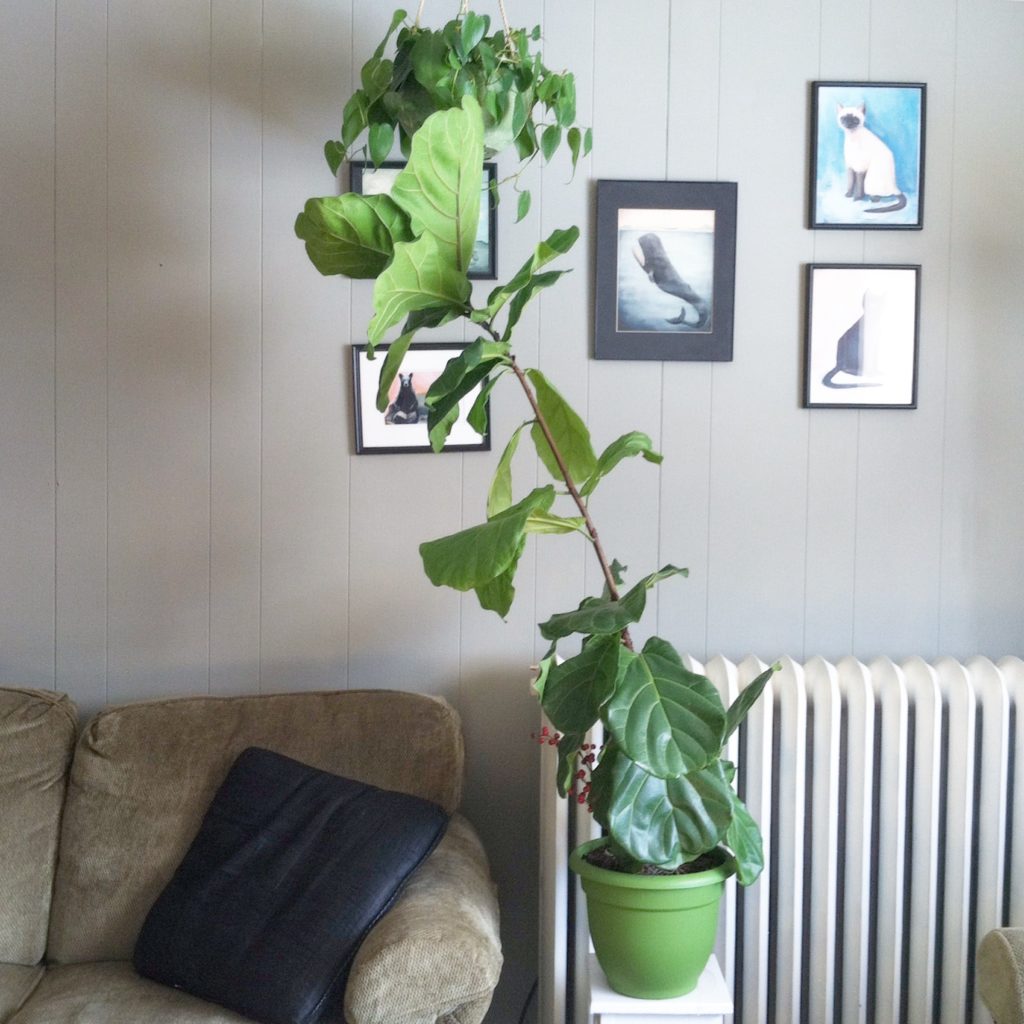
It was somewhat difficult finding one at first, but strangely the Home Depot always seems to have several in their greenhouse. I purchased him in 2015 at 4′ and in three years he is now well over 7′. Only one trunk, yes, but he’s a happy clam and I just keep adding stakes as he grows higher. I’ll have to prune him eventually, but that’s another blog post.
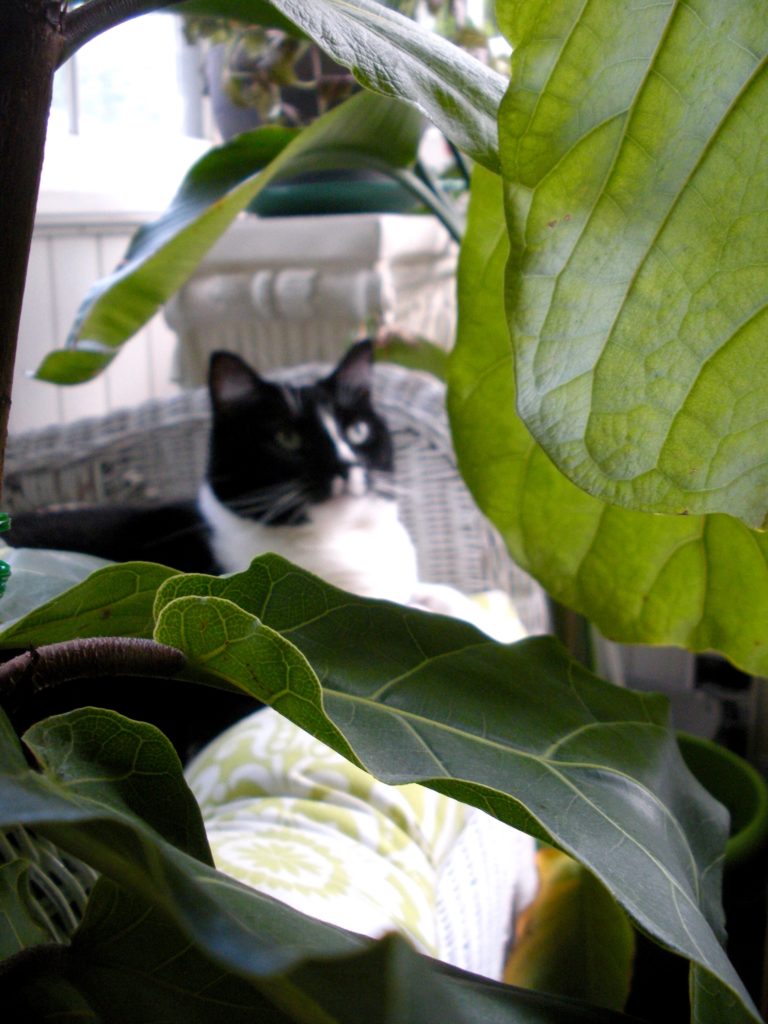
Basic Care
The best advice I can give you is this: listen to your Fiddle. First, follow the basic rules of Ficus husbandry – water when slightly dry, keep in a well lit location with filtered light, and keep humidity steady in all seasons. These rules will keep them content, happy, popping a leaf every so often. Fiddles are sneaky devils and this simply isn’t enough – you must be one with the Fiddle, grasshopper.
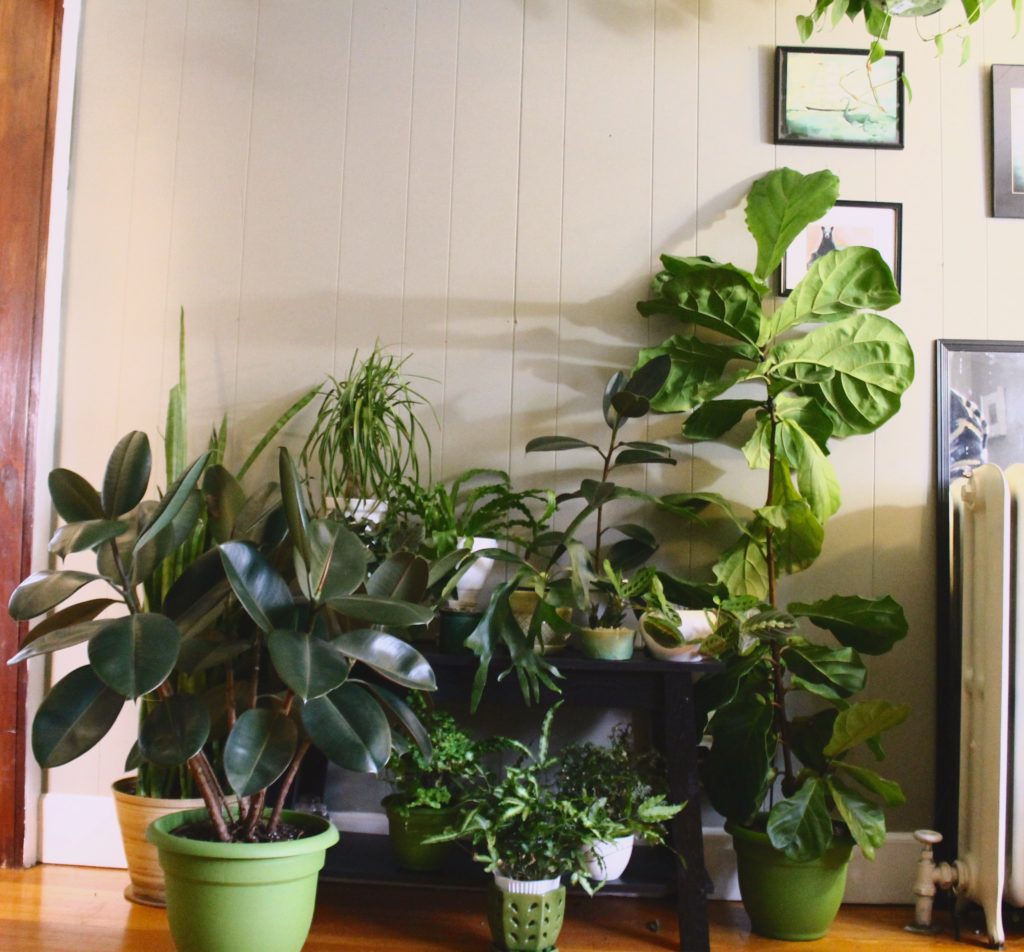
My weekly Fiddle tasks include checking the moisture as they never like to completely dry out. In very dry winter weather and very hot summer air, they drink like crazy. Next, like his large leafed siblings, Fiddle Leaf Figs need their leaves cleaned. Dust and Godknowswhat falls onto leaves and prevents them absorbing sunlight. Basically it stifles growth and that’s horrible. Use a soft cloth with a drop of organic dish soap and just clean the top of the leaf. Lastly, I rotate Filbert so he does not droop to one side. Unfortunately for the first year I did not do that – scroll back up to picture 1 for result.
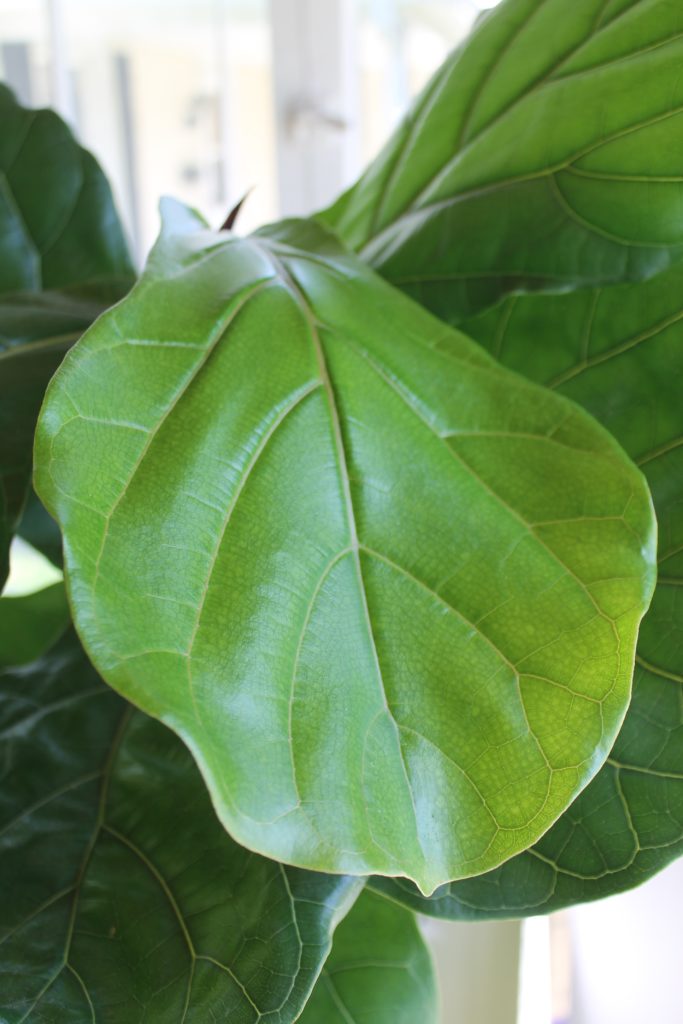
On the other hand, Fiddles like drama. Yes, Filbert looks healthy and happy but there was a period he was only produce itty-bitty-comically-small-for his-size leaves and I did not know why. Another time he developed his own acne and there were brown spots on some leaves but not others. Then, some leaves randomly unfurled with a hole in them, which was generally unsightly. And last, I cannot stress, he is still somehow supported by one trunk and will not pop out another. I tell myself it’s just his teenager faze.
As you can see, despite all of this drama, Filbert is still thriving. When one of these issues appeared, I tried to identify why this may be happening and what I can do to fix it, using my own green intuition, which I know you have too. Usually it’s too much water (yellow leaves) or not enough (edges of leaves turn brown), sometimes it’s not enough light. Since Fiddles’ issues are not cut and dry, the best way to keep them alive is to learn what they like about you and your home. Aw.
And if you’re looking to propagate your Fiddle Leaf Fig – here is a painless tutorial on how to root a cutting easily in water.
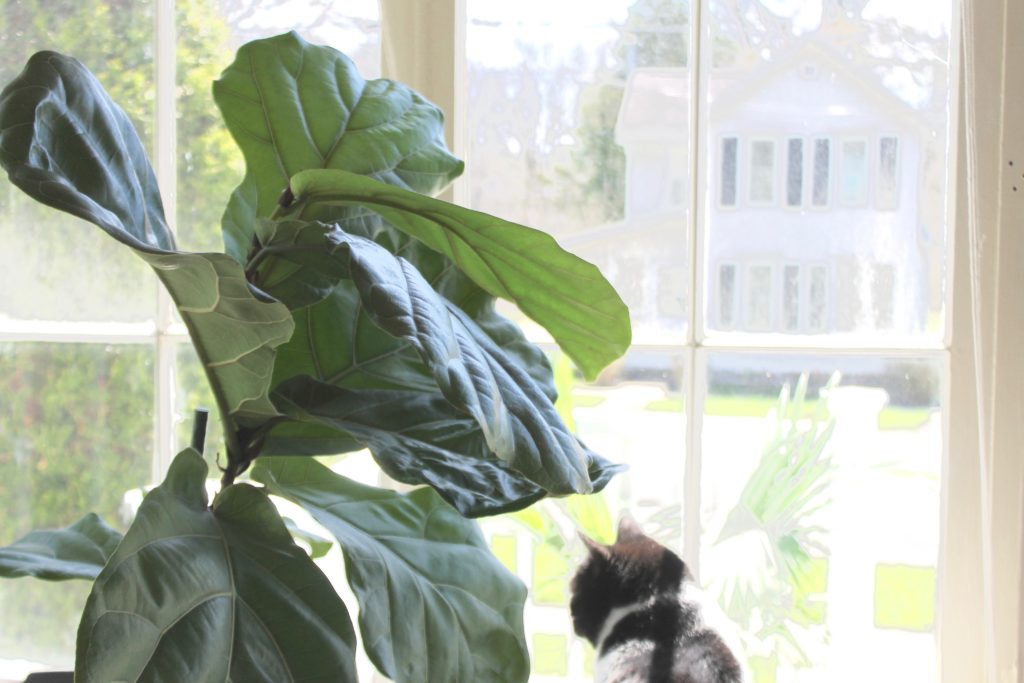
Are Fiddles Toxic?
I do have one more big question that still comes up – why do I have a toxic Fiddle Leaf Fig in my house, with cats? Just as I mention in my posts on Monstera Deliciosas and Rubber Trees, I don’t have an issue with my cats and Fiddles. Filbert is considered a toxic plant and actually belongs to the ficus family, as is his brother, Rudy (Ficus elastica). Also like Rudy, Filbert’s sap and leaves are the issue, which can cause stomach upset if ingested. I would consider the Ficus family to be marginally toxic, as very few pets actually want to consume any part of the plant anyway.
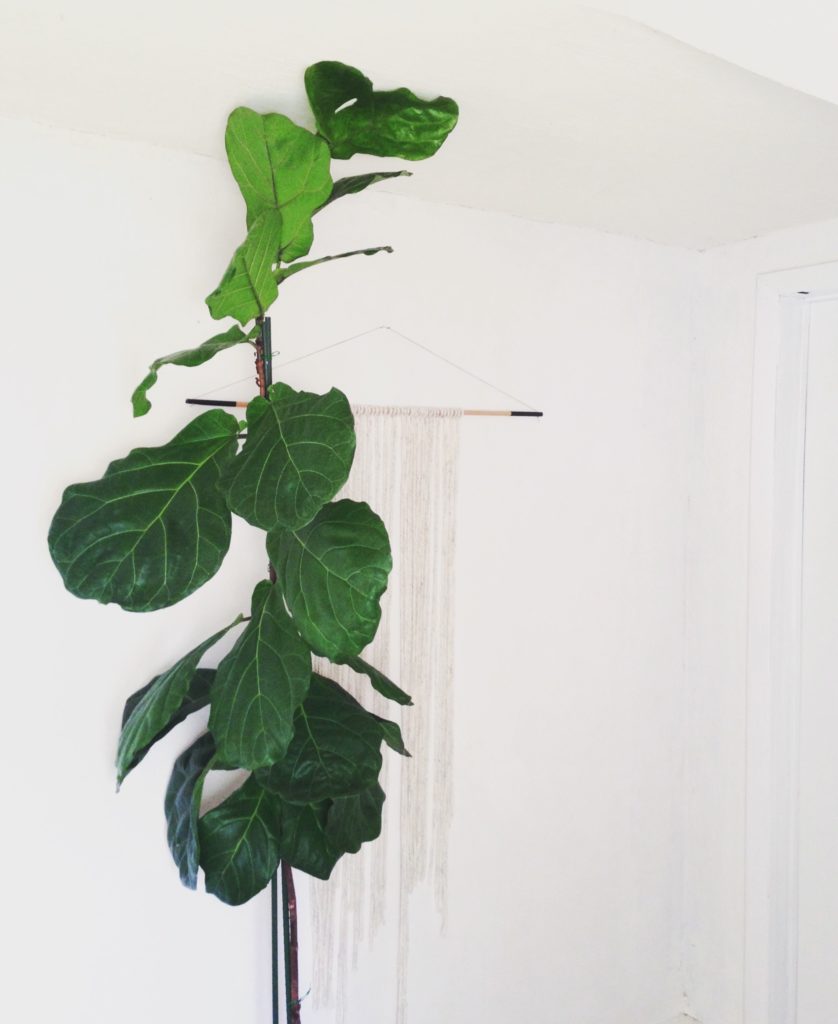
Due to leaf size, Filbert is very much a piece of furniture to my cats and are not fazed. They do enjoy rubbing their faces on bottom leaves which is relatively harmless but annoying. I will say that, if your Fiddle is sprouting a truck from the base, that may be a chew-able treat in a cat’s or dog’s eyes. If you find it is a problem, elevated your Fiddle on a plant stand so lower leaves are not reachable.
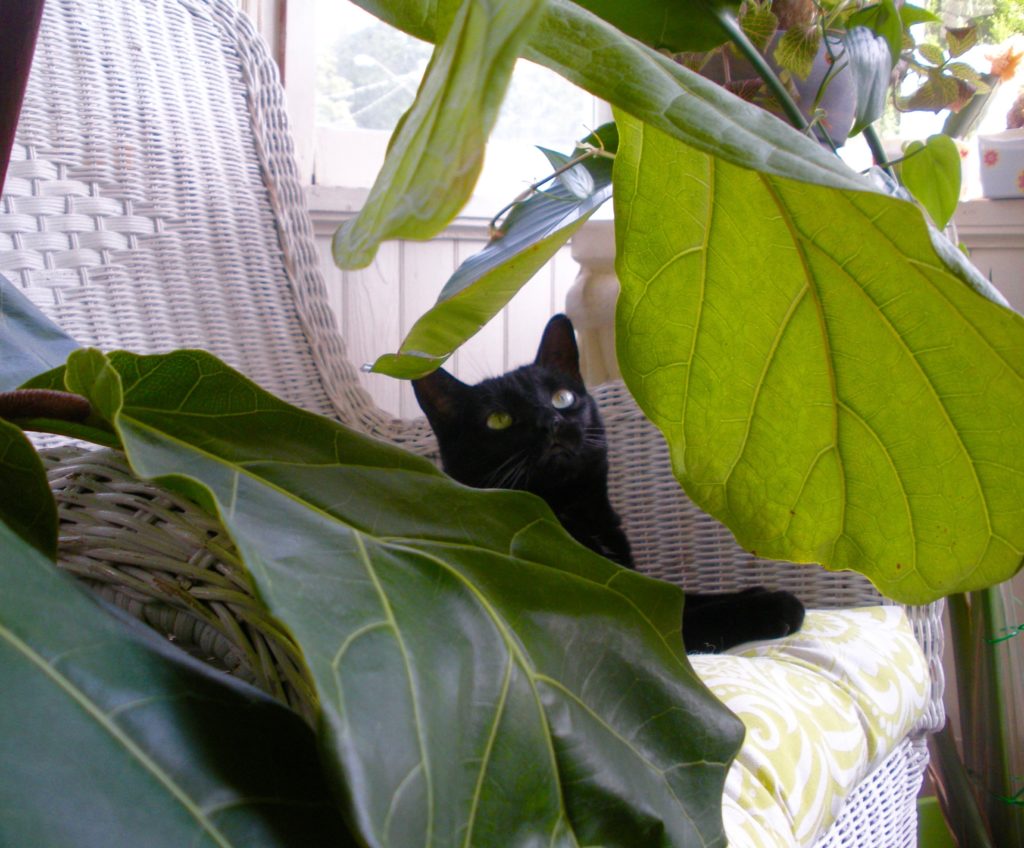
I have said this before and I’ll say it again – the point of my blog is to educate others about certain plants and how pet and plant owners can co-exist peacefully. While I do always recommend not filling your home with potentially toxic plants, I think it’s important to understand why plants are toxic.
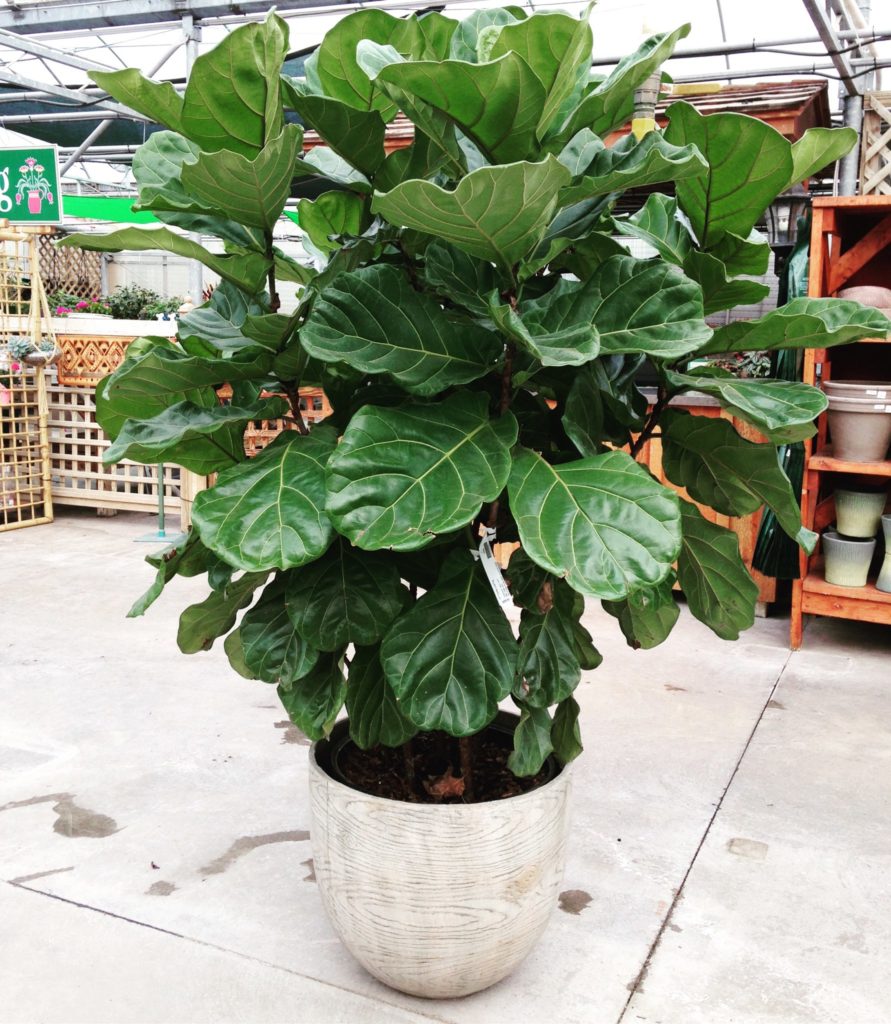
The only way I’ve been able to collect plants is by reading and researching, helping my plantuition grow. I hope you do the same. As my one year blog anniversary (blogiversary?) creeps up, I want to thank everyone who reads my posts and takes some kind of interest in my plant obsession. I do hope you actually learn something too.

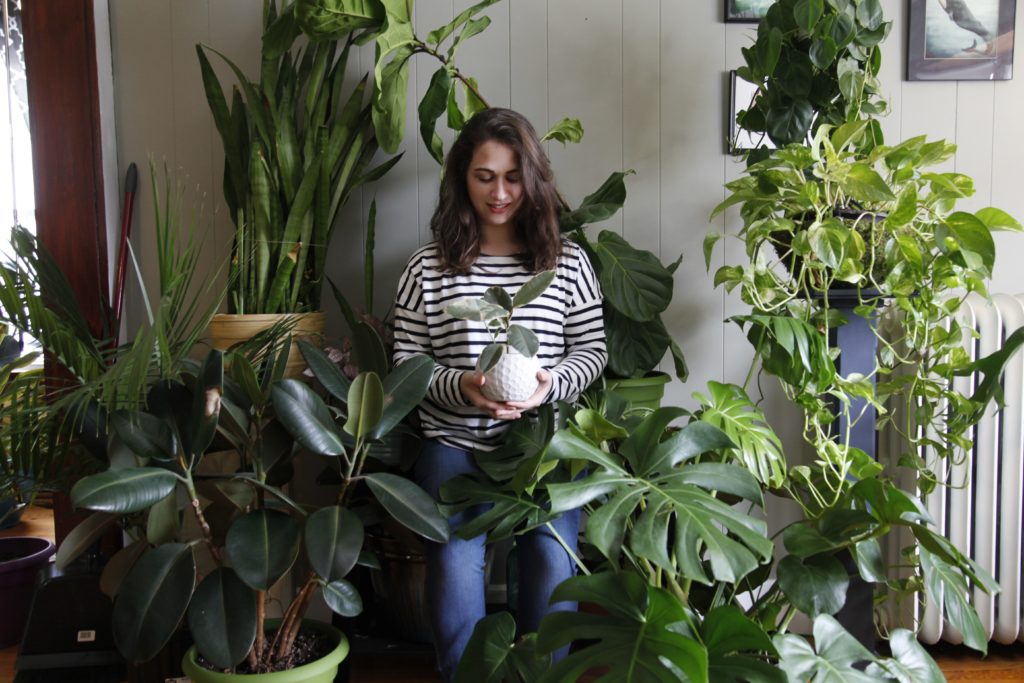
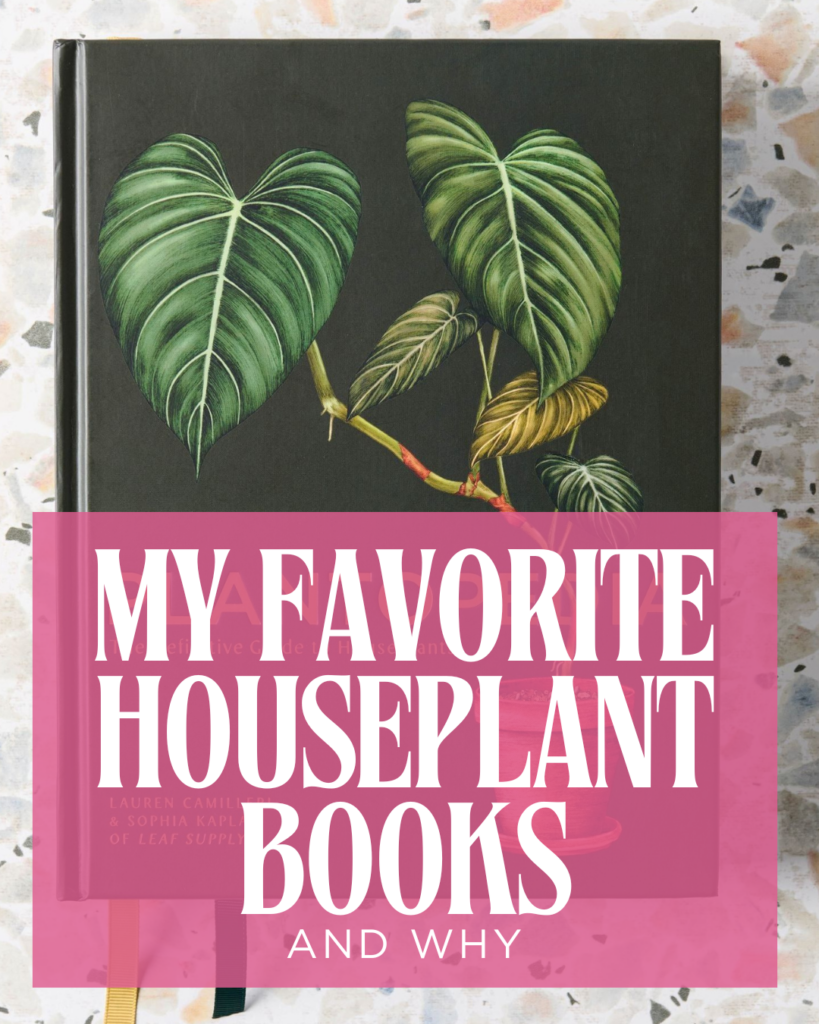
Thanks for your blog post! I’m getting a cat for the first time and was worried I’d have to get rid of my rubber plant and my fiddle leaf fig, so I’m happy to hear they might be able to cohabit peacefully!!
Glad I can help you out, Steven!
I believe 2 of my kittens may have ingested a dried up fiddle leaf fig leaf as they are both vomiting and have no appetite. Would a dried leaf harm them as much as a live one?
Hi Rachel, First, if you haven’t done so already, take your kittens to the vet asap. A toxic plant such as a Fiddle Leaf still has some toxicity if ingested despite it being dried. Because they’re kittens, they are even more sensitive to plants. I hope they recover ok!
Very helpful.
Thank you for your helpful information. I love the Fig leaf tree and but thought I’d ck it out for toxicity before I bought one. After reading this I think I’ll buy a tall one and keep the leaves high above my curious pug.
Thanks for the post! I just found your blog on a frantic Google search when I realized the fiddle-leaf fig I’ve just purchased is considered poisonous to pooches. Your explanation really helped calm my anxiety. I’m a novice at the houseplant thing, and I like your way of looking at the situation I will definitely be back for more! Namaste?!
So happy I can help Kimberly! <3
Thank you, this is my 2nd Fiddle Fig (Figgy Small) lol I’m doing everything in my power to keep this one alive. I appreciate your posts & up beat way of communicating with the reader.
Thanks Elizabeth – I hope he pulls through! Just keep him in bright sunlight and lightly moist and he should be happy as a clam.
hi ! great post about your fiddle but one thing– please please never put cayenne or any type of pepper on your plants to keep your cats away. this is a common and totally awful method–if they’re curious and get a bit on their paws before cleaning themselves or ingesting it, they cannot handle the heat and there have been serious cases of it getting in a cats eyes and they clawed out their own eyes. obviously the message is clear: cayenne pepper is not the method. if you clean your plants leaves with a bit of lemon water, the citrus smell should be adverse to your cats nose and they should stay away (some citrus is also not safe for cats. most essential oils and herbs aren’t cat safe either) or just spray some water near them to spook them away from the plants. thanks for the info, enjoy your plants, and keep your fur babies safe!
Hello! I want to get house plants that are thick leafed and have a deep green color, just like the one you have on the far left of your 3rd picture! Could you please tell me what that is? I’m new to all this.
Hi Danielle, that’s a rubber tree! Also known as Ficus elastica – I have a whole post about them here.
Great article, thanks!
What about peace lily’s and cats?
Peace lilies are still toxic – I would keep them out of reach of cat paws.
Thanks so much, this is really helpful!